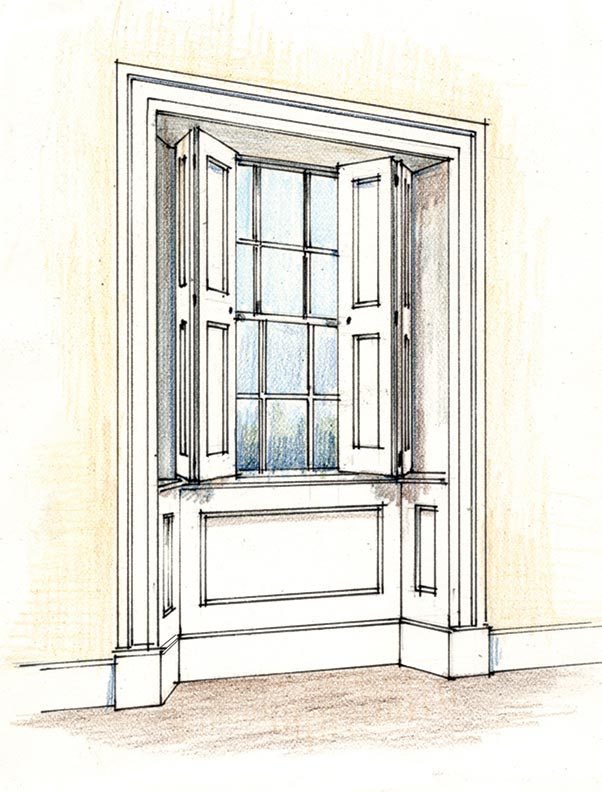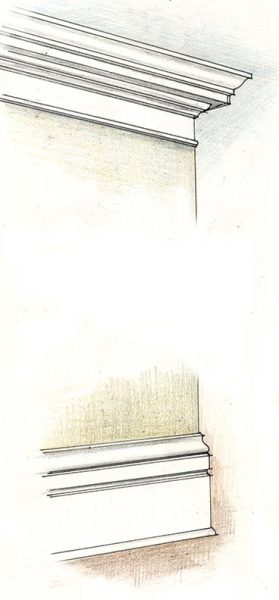Interior shutters can provide opaque privacy and light screening to a room and also can create a layer of sophistication to a window unit. This can be particularly true for windows set in thick walls.
A room without moldings simply looks naked. Moldings add beauty, shadow lines, texture, and dimension to a space—and they conceal seams and joints between ceilings, walls, and floors. Too many homes today lack these subtle details, which add character and charm to interiors.
Whether you are planning on renovating an existing home or building new, don’t skimp on these details. These features are important to a home, but they often get overlooked. There was a time when moldings were introduced to mansions and simple farmhouses alike. Unfortunately, this practice has fallen by the wayside in today’s production houses. With a bit of ingenuity and planning, these empty canvases can be transformed into inviting, three-dimensional living spaces.
Cornice or crown molding creates a transition from the vertical wall to the horizontal ceiling. Similar to crown and cornice molding, baseboard molding transitions the wall to the floor, and forms a necessary bridge between dissimilar materials.
Simply defined, moldings are the finished woodwork or plaster work in a room. The basic types are baseboard, window and door trim, crown moldings, and chair rails. When executed well, moldings make a room look and feel finished. The purpose of these moldings is to create a play of light and shade in a room. Moldings also break up flat surfaces in a room and define the aesthetic.
Today’s ornamental moldings are based on classical orders of architecture developed in ancient Greece and Rome. An order is the arrangement of a particular style column together with its entablature, base, and capital. Eighteenth- and 19th-century architects and house builders looked to these ancient forms to create classical moldings in home designs, and these aesthetics are still used today for their timeless beauty.
Some of the earliest types of moldings are wainscoting and paneling, which are created by a succession of floor-to-ceiling chamfered vertical boards. These might have been used for insulation during the seventeenth century in cold climates. Another common molding detail is the baseboard, which covers the floor-to-ceiling connection. Historically, these were painted black to hide marks and scuffs. Similarly, chair rails were introduced to protect walls from the backs of chairs. These early moldings were hand-cut and planed, and the carpenter often left his handcraft with subtle tool marks.







